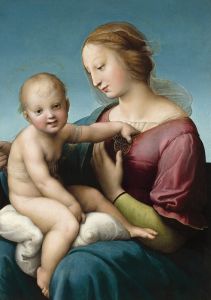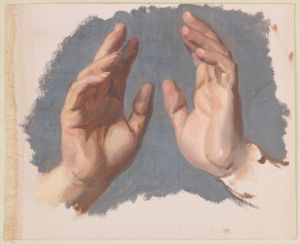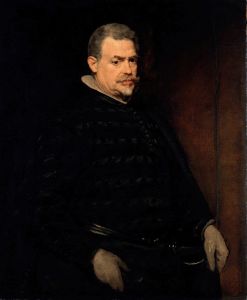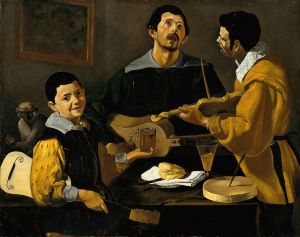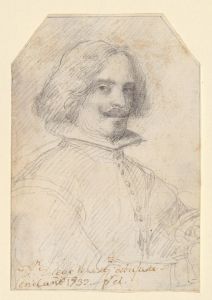
Cabeza de muchacha
A hand-painted replica of Diego Velázquez’s masterpiece Cabeza de muchacha, meticulously crafted by professional artists to capture the true essence of the original. Each piece is created with museum-quality canvas and rare mineral pigments, carefully painted by experienced artists with delicate brushstrokes and rich, layered colors to perfectly recreate the texture of the original artwork. Unlike machine-printed reproductions, this hand-painted version brings the painting to life, infused with the artist’s emotions and skill in every stroke. Whether for personal collection or home decoration, it instantly elevates the artistic atmosphere of any space.
Diego Velázquez, a prominent Spanish painter of the 17th century, is renowned for his significant contributions to the Baroque period, particularly through his role as a leading artist in the court of King Philip IV of Spain. Among his many works, "Cabeza de muchacha" (translated as "Head of a Young Girl") is one of the lesser-known pieces attributed to him. However, due to the scarcity of detailed historical records and scholarly consensus regarding this specific painting, there is limited information available.
Velázquez's oeuvre is characterized by his masterful use of realism and his ability to capture the subtleties of human expression and the play of light and shadow. His works often reflect a deep understanding of human psychology and a keen eye for detail, which are evident in his portraits and genre scenes. While "Cabeza de muchacha" is not as extensively documented as some of his other masterpieces, it is believed to embody these quintessential elements of Velázquez's style.
The painting is thought to depict the head of a young girl, rendered with the delicate brushwork and nuanced tonal variations that Velázquez is celebrated for. The focus on the subject's face suggests an intimate and personal portrayal, capturing the innocence and simplicity of youth. This approach aligns with Velázquez's ability to convey the essence of his subjects, whether they were members of the Spanish royal family, common people, or figures from mythology and religion.
Velázquez's technique often involved a limited palette, which he used to achieve a remarkable depth and realism. This method allowed him to create lifelike textures and a sense of immediacy in his portraits. In "Cabeza de muchacha," these techniques would likely be employed to highlight the softness of the girl's features and the gentle play of light across her face.
The painting's provenance and current location are not well-documented, which is not uncommon for works from this period, especially those that may not have been part of major collections or exhibitions. As with many works attributed to Velázquez, questions of authorship and attribution can arise, given the practices of workshop production and the passage of time.
Despite the limited information on "Cabeza de muchacha," Velázquez's influence on the art world remains profound. His ability to capture the human condition with empathy and precision has inspired countless artists and continues to be studied and admired. His works, including those with less documentation like "Cabeza de muchacha," contribute to our understanding of the Baroque period and the evolution of portraiture.
In summary, while specific details about "Cabeza de muchacha" are sparse, the painting is generally considered to reflect the hallmarks of Velázquez's artistry. His legacy as a master of realism and portraiture endures, with each attributed work offering a glimpse into his exceptional skill and the cultural context of 17th-century Spain.







